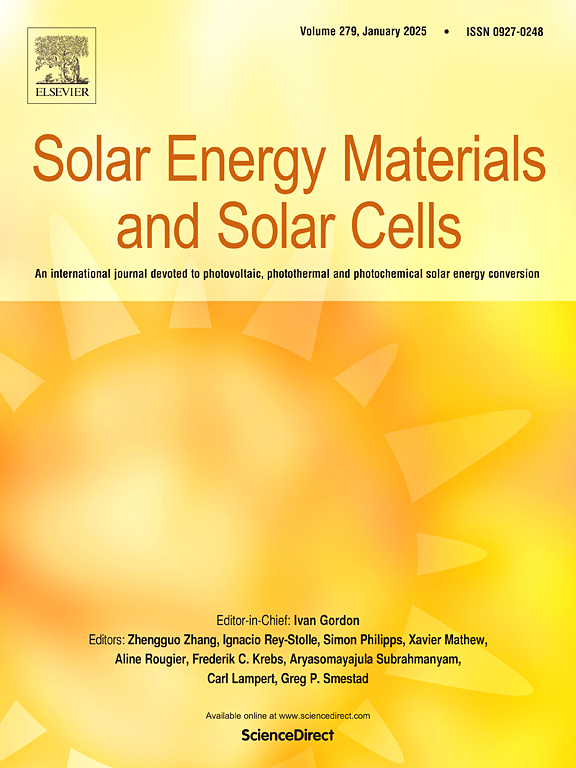Layer-separated treatment accelerating growth of P-type hydrogenated nanocrystalline silicon in SHJ cells
IF 6.3
2区 材料科学
Q2 ENERGY & FUELS
引用次数: 0
Abstract
Doped nanocrystalline silicon has higher conductivity and lower parasitic absorption than doped amorphous silicon when used in photovoltaic heterojunction cells, which has been demonstrated in many previous studies. In this paper, the growth mechanism of p-type hydrogenated nanocrystalline silicon (p-nc-Si:H) thin films as doped emitter layer of silicon heterojunction (SHJ) solar cells is researched. Firstly, we focused on the effect of different PECVD deposition conditions on the growth rate and rapid crystallization of p-nc-Si:H given the frequency of 13.56 MHz, such as gas flow during deposition, chamber pressure, and power-density. We find that solar cell performs worse if deposition rate of p-nc-Si:H is dramatically increased. Then, we create layer-separated treatment method that balances growth rate and film quality through layered growth at different power levels. Finally, we designed layer-separated treatment for fast deposition rate of 2.11 Å/s with high crystallinity, then realized SHJ cell whose efficiency reached 25.88 %.
求助全文
约1分钟内获得全文
求助全文
来源期刊

Solar Energy Materials and Solar Cells
工程技术-材料科学:综合
CiteScore
12.60
自引率
11.60%
发文量
513
审稿时长
47 days
期刊介绍:
Solar Energy Materials & Solar Cells is intended as a vehicle for the dissemination of research results on materials science and technology related to photovoltaic, photothermal and photoelectrochemical solar energy conversion. Materials science is taken in the broadest possible sense and encompasses physics, chemistry, optics, materials fabrication and analysis for all types of materials.
 求助内容:
求助内容: 应助结果提醒方式:
应助结果提醒方式:


